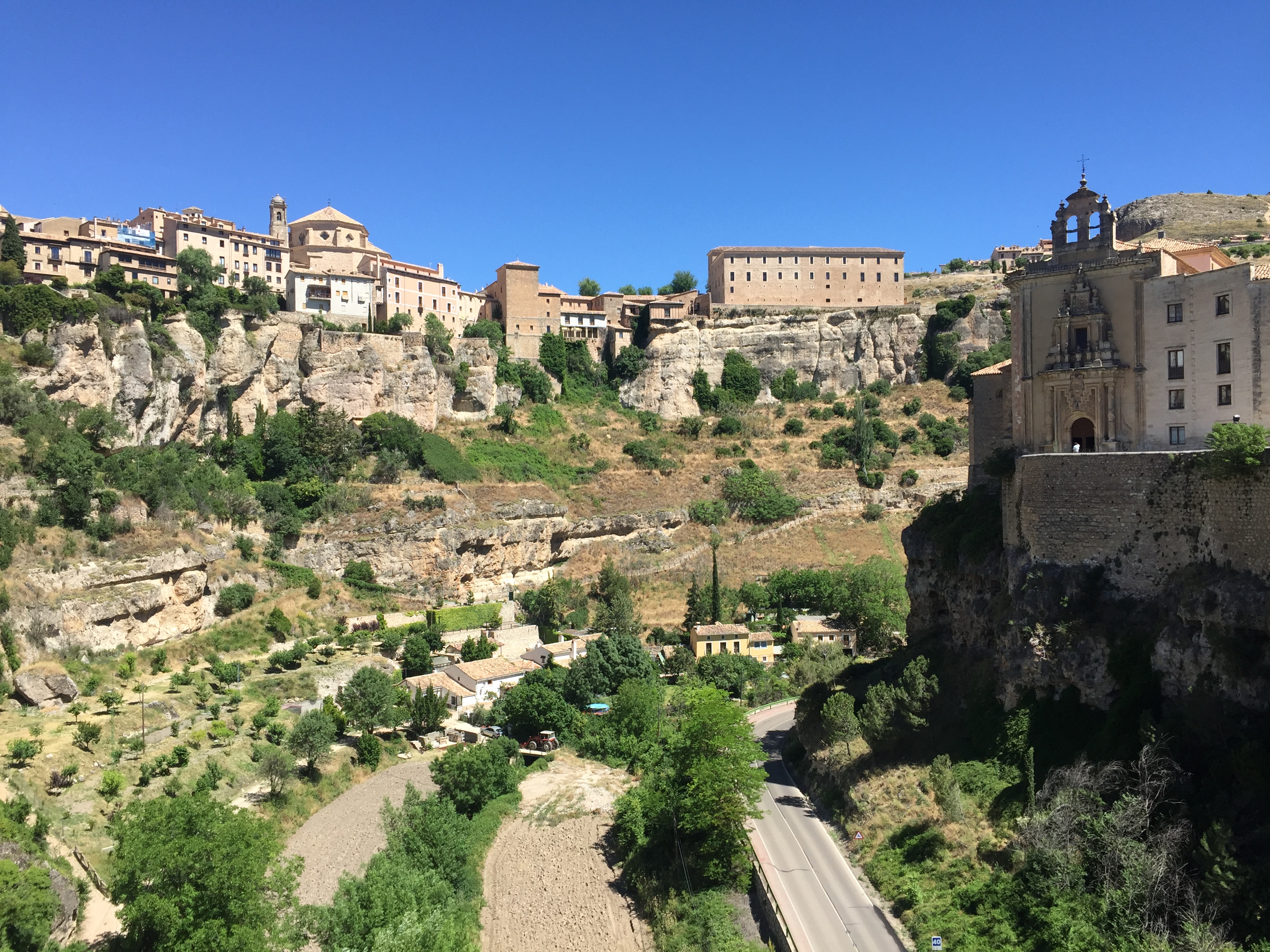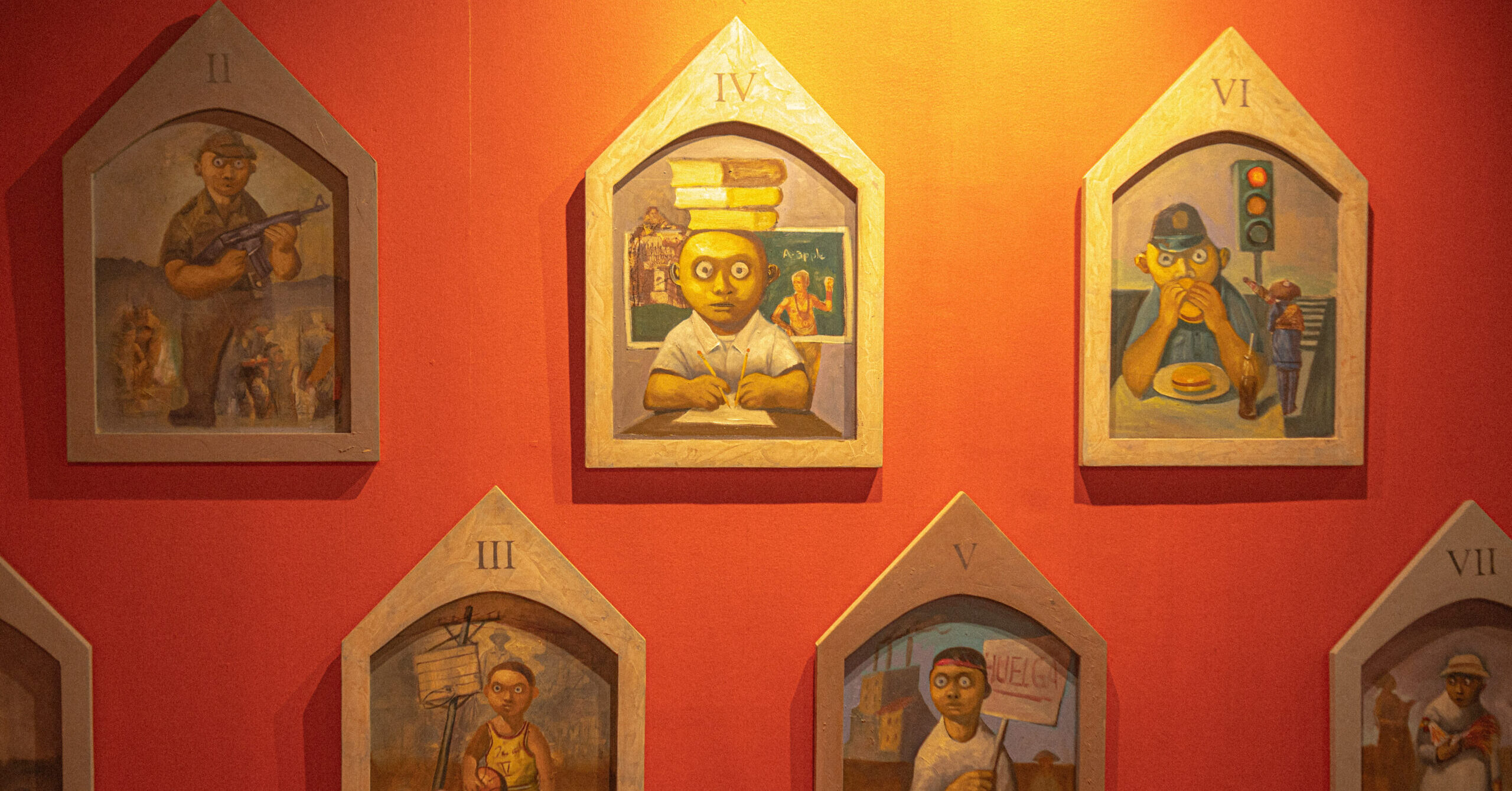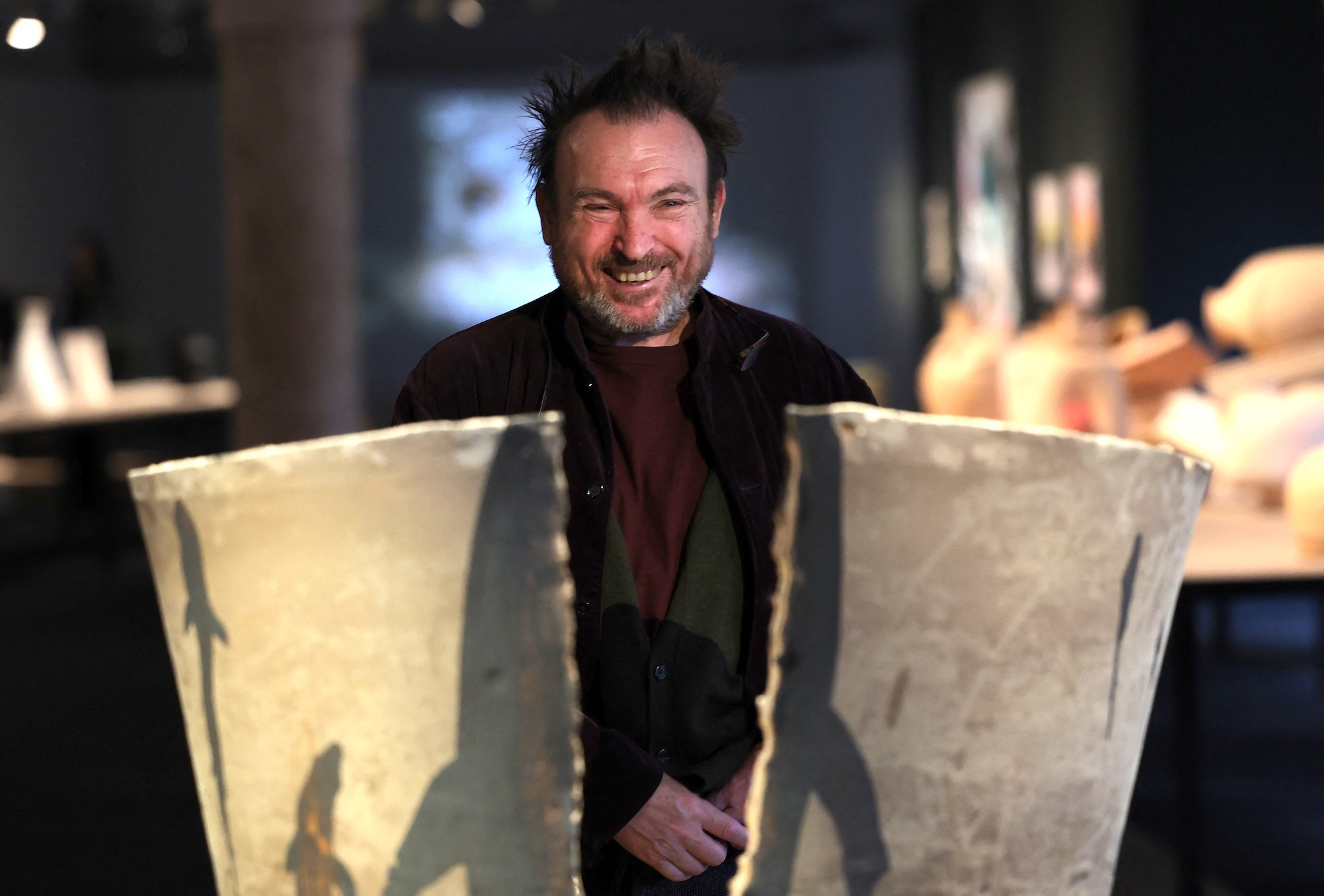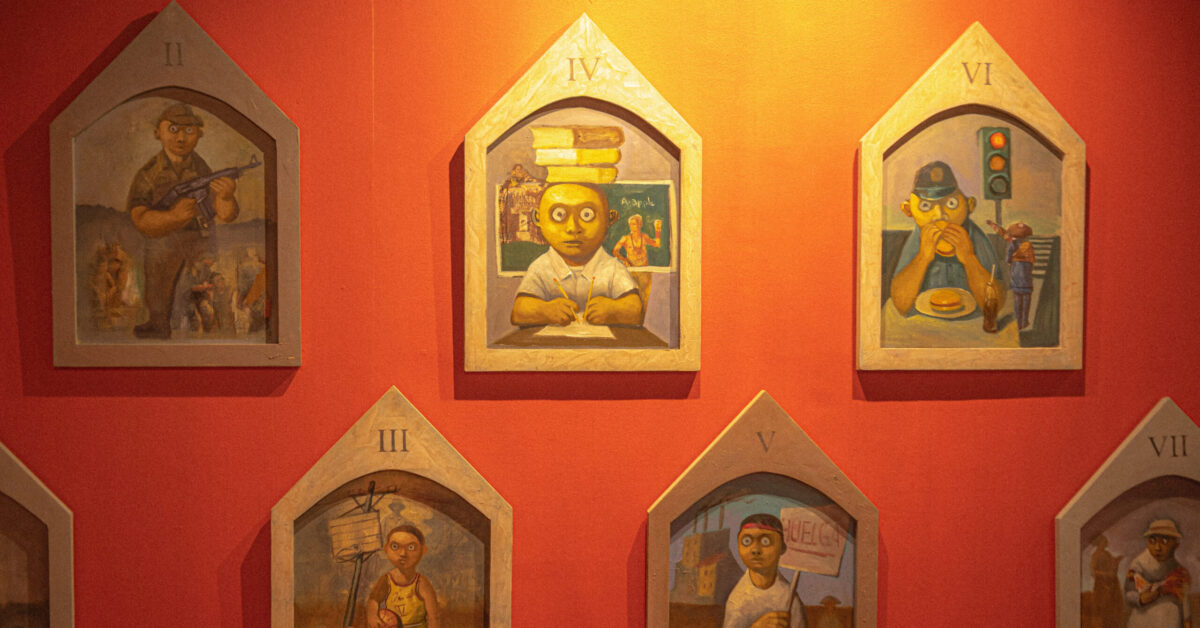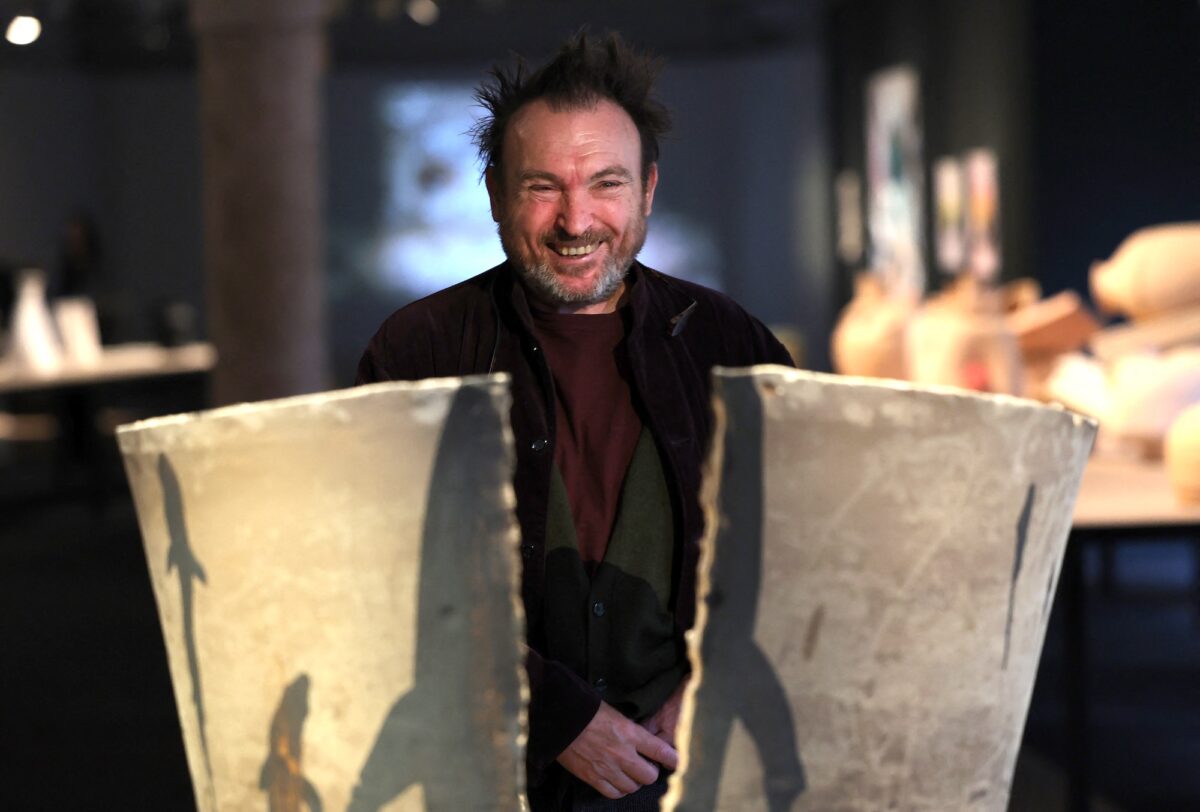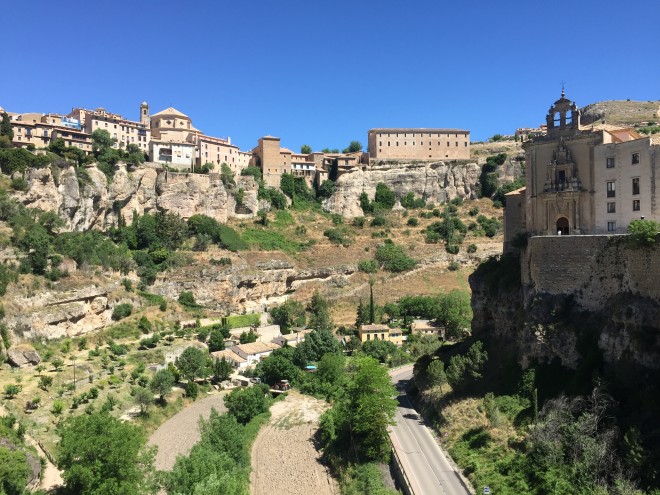
Cuenca is perhaps the best-kept secret of Spain, which received a staggering 68.2 million tourists last year, making it the world’s third most popular holiday destination after France and the United States, according to the United Nations World Tourism Organization.
Guess how many of that number reached Cuenca? About 200,000, said our guide.
That may be because Cuenca, a city in central Spain about three hours by train from Madrid, is not immediately dazzling in the way of other old Spanish cities with their catalogue of grandiose castles and cathedrals.
Iconic emblem
What this small town of about 57,000 residents offers is something else—the spectacular vista of a medieval fortified settlement built on sheer cliffs that overlook massive gorges slashing across the countryside. The houses and buildings are built right on the precipice—the most famous of them, the Casas Colgadas or Hanging Houses of Cuenca, now serving as the iconic emblem of this World Heritage city.
Cuenca does have a cathedral—Spain’s first Gothic cathedral, in fact, built near the close of the 12th century. The town’s most imposing landmark, it serves as the focal point for a walking tour of Cuenca, which is the best way to enjoy a city that the Guardian UK has described as a “mind-boggling mix of convents, abstract art venues, and interesting restaurants.”
The highly religious character of the town in the Middle Ages is still evident in the profusion of monasteries, oratories and clerical architecture that dots the city. Among the most prominent, because of its prime location right on the promontory, is the Convento de San Pablo, now converted into a parador or hotel.
The convent can be reached by crossing the San Pablo Bridge, an iron-and-wood structure built in 1902 in the then-dominant Eiffel style to replace an older stone bridge that had collapsed. The bridge allows for a breathtaking 360-degree view of the fortified city towering over the deep canyons below it.
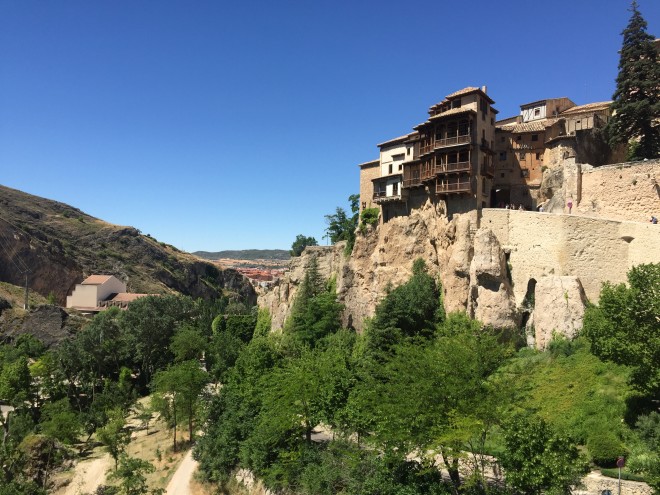
Important repository
Also unmissable from the bridge are the famous Hanging Houses, so-called because they appear to be suspended over the edge of a ravine. Dating back to the 15th century, the three preserved structures with their distinct wooden balconies are what’s left of similar houses that were said to be prominent in olden times.
Filipino tourists will find them of particular interest for one reason: Two of the buildings now house the Museo de Arte Abstracto Español (Museum of Spanish Abstract Art), an important repository of 20th-century art established in 1966 by Filipino-Spanish artist Fernando Zobel.
Born in Ermita, Manila, and a graduate of medicine at the University of Santo Tomas, Zobel ended up becoming a painter and a leading exponent of modernist art, while also working in the family-owned Ayala Corp. He eventually relocated to Cuenca and founded the museum that is now one of the city’s star attractions.
Its extensive collection of paintings and sculptures include works by some of the most significant contemporary Spanish artists—Saura, Torner, Rueda—along with seminal Zobels, of course.
So esteemed a son of Cuenca is Fernando Zobel that the city’s railway station was named in his honor.
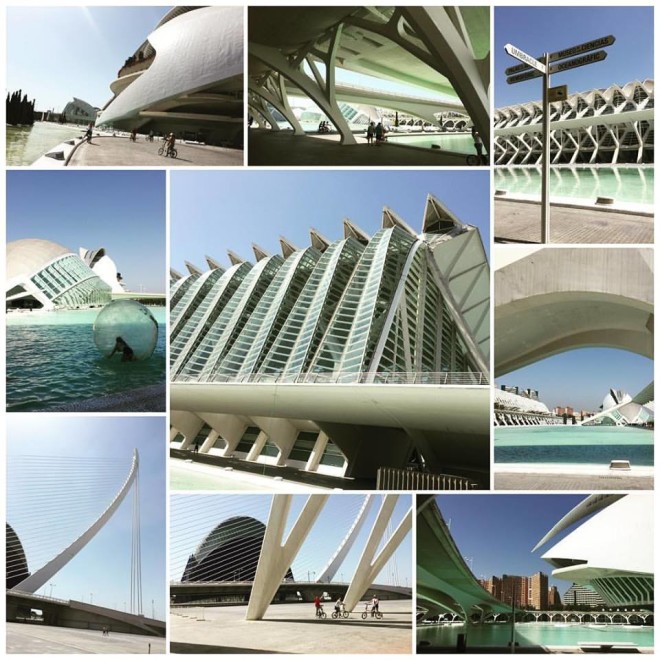
Gleaming future
If Cuenca, with its ancient buildings, its stone steps, narrow alleyways and timeless topography, is a vision of old Iberia (though an unlikely bastion of modern art), Valencia, about two hours by train from it, is the gleaming future, with a vibrant, cosmopolitan pulse akin to Madrid and Barcelona—the only other cities in Spain larger than it in terms of size.
Valencia is popularly associated with two things: Las Fallas, the fire festival that happens in March; and paella, the rice dish that the city considers a cultural birthright.
At Escuela de Arroces y Paella Valenciana, visitors can even learn to cook the fabled dish step by step, complete with ritual singing and chanting led by the school director himself, chef Jose Manuel Benito. Afterwards, the students help themselves to their creation.
But there is more to Valencia than paella, and fortunately this city of varied attractions helps one burn off the carbs. The Valencia Cathedral, the Mercado Central (central market) and the rest of the historic city center are best explored on foot. But a good part of Valencia is also designed for biking—specifically the Jardines del Turia, or Turia Gardens, which runs across the length of the city for nine kilometers, making it one of the largest urban parks in Spain.
The gardens are a monumental civic development project; the former Turia river was redirected to prevent flooding, but instead of turning the riverbed into housing projects or commercial sites, the city converted the tracts into an undulating ribbon of green, with parks, gardens, footpaths, bicycle and jogging lanes, open performance spaces and pocket nature reserves that all city residents can enjoy.
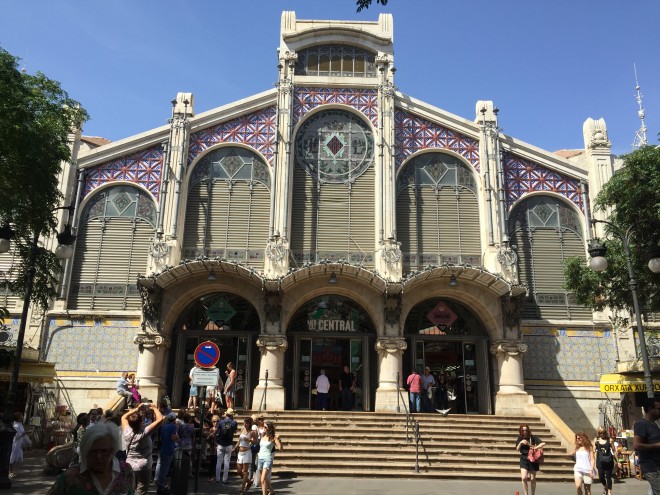
Stunning development
Bikers going from end to end pass through historic bridges as well as the city’s main monuments and buildings. The eastern mouth of the riverbed hosts an even more stunning development—the futuristic Ciudad de las Artes y las Ciencias (City of Arts and Sciences).
The complex of buildings, all designed—save for one—by the celebrated Valencian architect Santiago Calatrava, hosts a science museum, an oceanographic park, concert hall, opera house and botanical garden, along with cinemas, art galleries and covered plazas. The distinctive architecture, marked by geometric shapes, curves and swooping lines on a massive scale that would not be out of place in a sci-fi film (the infrastructure, in fact, served as the backdrop for the 2015 film “Tomorrowland”), gives the Valencia skyline an ultramodern vibe.
The shopping one has put off in quaint Cuenca? Valencia is the place to splurge—from the overwhelming gastronomic abundance at Mercado Central and the handmade crafts in Plaza Redonda all the way to the tony international goods in the Colon shopping district.
And in the late afternoons, to take a breather from all that, one could book a catamaran ride and just drift for a couple of hours on the Mediterranean, watching the city shoreline from afar shimmering in the eternally unhurried sun (dusk is around 8 p.m. at this time). Like the best of Spain, Valencia does seem to have everything for the curious traveler: food, history, culture, nature, urban pleasures, even the sea.
Cathay Pacific flies four times a week direct from Hong Kong to Madrid; Call Philippine 24/7 hotlines 1-800-8739-5117 (Globe) and 1-800-1441-1011 (Smart/PLDT).

